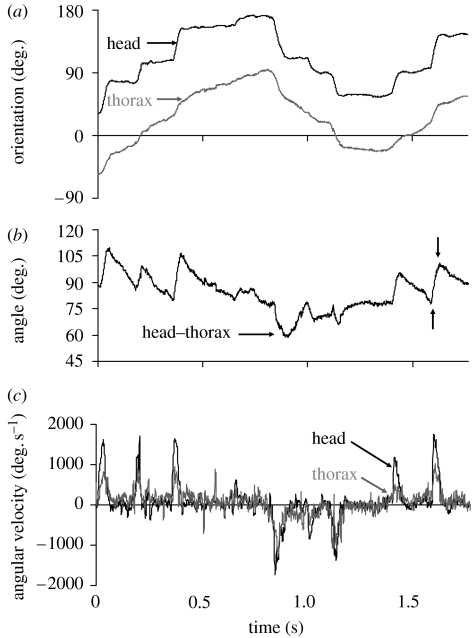Figure 2.
The change in (a) orientation of the head and thorax and (b) the angle between the head and thorax in a walking male C. dalmanni. Vertical arrows denote the amplitude and duration of head rotation relative to the thorax in one turn. (c) The angular velocities at which the head and thorax rotate relative to the surrounding environment. The sharp spikes in the angular velocity curve of the head are examples of the turns analysed in this study.

